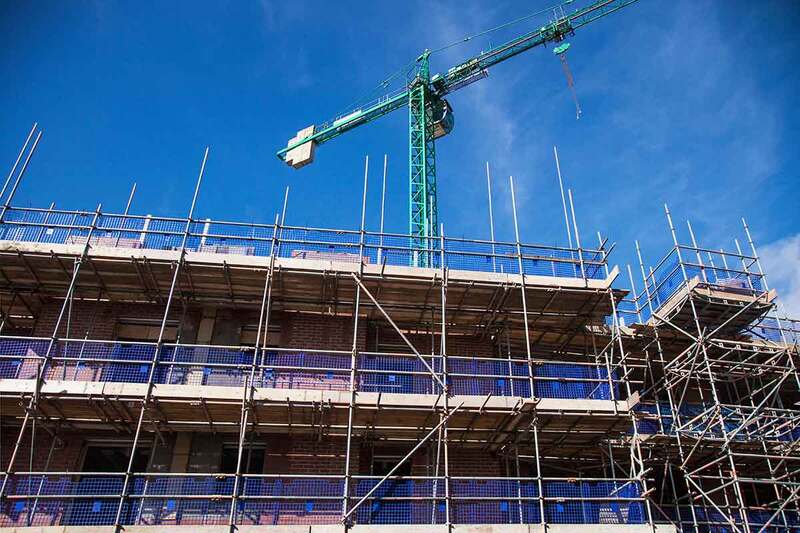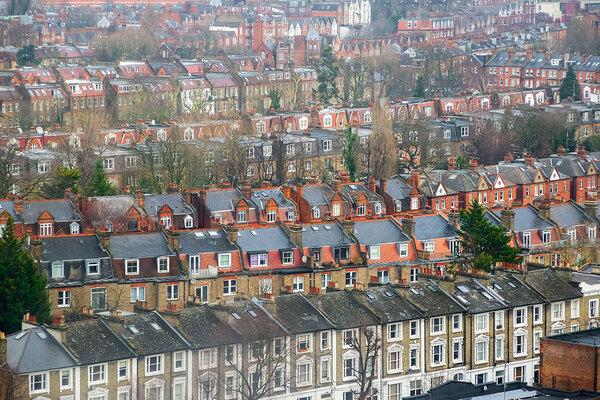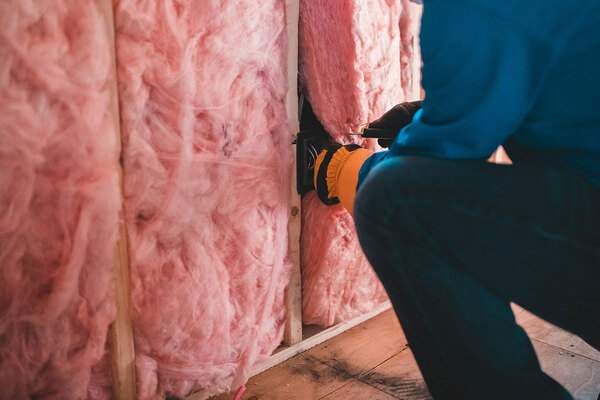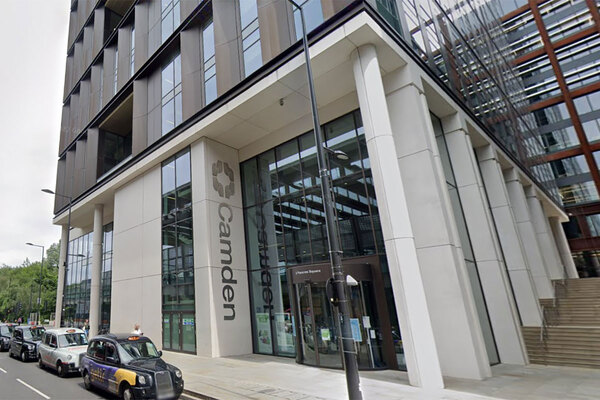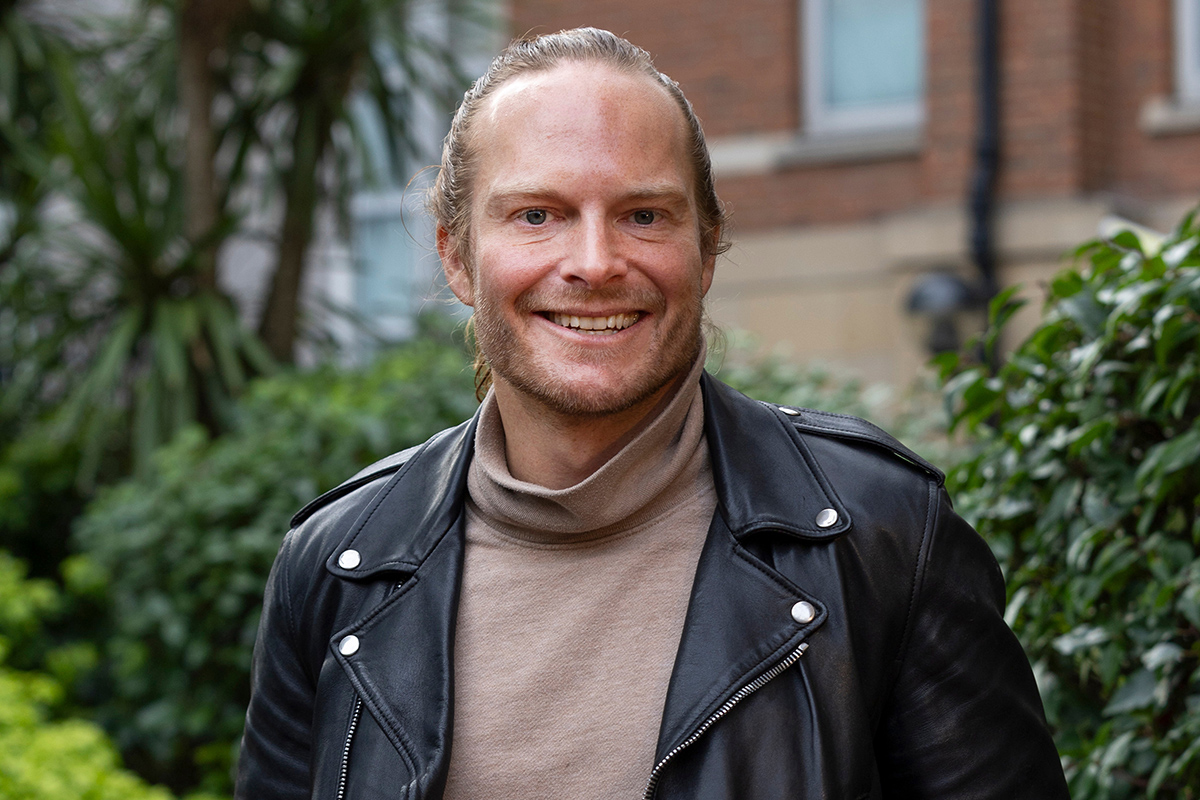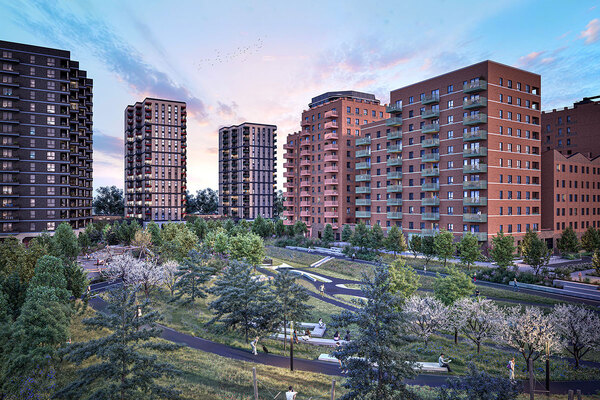Inside Housing calls for the next government to Build Social
Today Inside Housing is launching a new campaign: Build Social. We are calling for all political parties to insert a commitment to build substantial numbers of social rent homes into their manifestos at the next general election. Katharine Swindells reports
Today Inside Housing launches a new campaign, with one message: Build Social.
The reasons for urgent action to deliver better outcomes for people in need of stable housing are painfully obvious. To quote just a few: right now there are more than 100,000 households living in temporary accommodation in England including 131,370 children, 14,000 households, including 9,130 children in Scotland, 4,465 households or 13,000 people in Wales and almost 4,000 households in Northern Ireland. These figures have been rising steadily and represent a blight on the lives of children, individuals and families across the UK. They are unacceptable and need to change.
We are calling for all the main parties in the UK to commit to a major programme of building homes for social rent in their manifestos for the next general election. We are calling for parties in England to pledge to build 90,000 homes a year over the next decade, or 900,000 in total. And we are calling on parties in Scotland to commit to 7,700 homes for social rent a year and 4,000 homes for social rent a year in Wales, adding up to at least another 11,000 homes a year in total.
We are not looking to reinvent the wheel with these figures – there is substantial consensus around them already. The figures we are using in England and Wales come from research carried out by Heriot-Watt University for Crisis and the National Housing Federation (NHF) back in 2019.
Organisations such as Shelter and the Joseph Rowntree Foundation (JRF) have made similar calls, and in 2021, research for the Association of Retained Council Housing (ARCH), the National Federation of ALMOs and the Local Government Association called for 100,000 new social homes a year. The figure we are using in Scotland is essentially a commitment to deliver on the figures in the existing Programme for Government and in Wales it is in line with the Welsh Government’s existing target to deliver 20,000 social homes for rent during the current Senedd term.
Aims of our Build Social campaign
For all political parties to commit to funding a substantial programme of homes for social rent in their manifestos at the next general election. This includes:
● 90,000 social rented homes a year over the next decade in England.
● 7,700 social rented homes a year in Scotland.
● 4,000 social rented homes a year in Wales.
Inside Housing commits to:
● Work to amplify the voices of people who need social housing, including families living in temporary housing and overcrowded conditions.
What we are looking to do is flag the consensus around the need for new homes for social rent. Today we are already revealing the first backers of our campaign. They include the Chartered Institute of Housing (CIH), the NHF, the Scottish Federation of Housing Associations (SFHA), Community Housing Cymru, the G15, the Northern Housing Consortium, PlaceShapers, ARCH, BME National, Crisis, Homes for Cathy, Home Group, L&Q and Peabody and Habinteg. But what has led us to launch this campaign? And why is building social rent the answer that all parties must back if the housing crisis is to be ended?
As of March 2022, there were 1.2 million households in England on their local authority’s housing waiting list, up 4.7% from March 2019. Scotland, Wales and Northern Ireland add another 350,000 households to the list. In London alone, there are more than 300,000 households waiting, up 26% on 2019. A total of 79,840 households in England faced homelessness between January and March, the highest number on record.
The latest data from the CHAIN homelessness database records that the number of people sleeping rough in London has gone up 9% year on year, and the number of people sleeping rough for the first time has increased by 12%.
As local authorities scramble to house these people, the use of temporary accommodation soars. In March 2023, there were 104,510 households in England living in temporary accommodation, the highest on record. Almost 65,000 of those households have children. In total, 131,370 children are living in temporary accommodation in England. Many are living in unstable, unsafe conditions.
The difference that stable housing makes to people’s lives can be remarkable. Last year, at risk of homelessness and struggling with postpartum depression, Shania was placed with her baby daughter in temporary accommodation in a hotel by Luton Borough Council. The room was “filthy”, she says, and caused her eczema to flare up. With drug users staying in nearby rooms, she worried about her daughter’s safety. She complained to the council, and after a month was moved to a small one-bed.
In March 2023, she was offered a permanent social rent two-bedroom flat, where she hopes she can settle down and find some stability for her and her daughter.
“I’ve made it a home in the past four months,” she says. “I’ve come a long way, through depression and temporary accommodation, and I’m proud of myself.”
But the most recent figures show a net annual loss of 14,154 social rent homes in 2021-22.
“We will never be able to access enough temporary accommodation to meet the demand,” a spokesperson from Luton Council says. “There also isn’t enough social housing or affordable private rented accommodation in the borough. We are building more homes in Luton, but we need a greater commitment from the government to support councils and other social housing providers to build more homes for social rent.”
“I’ve made it a home in the past four months. I’ve come a long way, through depression and temporary accommodation, and I’m proud of myself”
In 2021-22, local councils in England spent £1.6 billion on temporary accommodation, up 61% compared to five years previously.
The cost of housing benefit has also ballooned as more people need support to pay their rent in the private rented sector, rather than the cheaper cost of renting a social home. Social rent is much more affordable – both for tenants having to pay it, and for the taxpayer. It is calculated using a formula related to property values, local incomes, size and location. All told, this usually makes for a significantly reduced rent compared to renting a home from a private landlord. It is also usually much cheaper than the affordable rent homes that have made up the bulk of new reduced rent housing in the past few years. These can be let at up to 80% of market rent. In London this is capped for new builds at the more affordable London Affordable Rent.
At the latest count, 2.44 million people in Britain claimed housing benefit, with private renters accounting for more than a fifth of claimants. A report from the House of Lords Built Environment Committee calculated the bill for housing benefits as £23.4bn per year, making it more expensive than most government departments. In comparison, the entire Department for Transport budget is £21bn.
What the campaign’s backers say

Tracy Harrison, chief executive, Northern Housing Consortium: “We’re backing Inside Housing’s Build Social campaign. We know the delivery of affordable homes in the North has fallen 45% short of the assessed need in recent years, so we want to see all political parties commit to build 90,000 more homes for social rent per year.”

Kate Henderson, chief executive, National Housing Federation: “This vital social housing target should form the backbone of a new holistic long-term plan for housing, which the NHF has been calling for. The failure of successive governments to build new social homes has brought our housing system to breaking point. The number of homeless children living in temporary accommodation is at the highest level ever recorded, and one in every six children in England is living in an overcrowded home.”

Aydin Dikerdem, chair, Association of Retained Council Housing: “We face a crisis in social housing, with the highest number of homeless households languishing in temporary accommodation since records began. That’s why we need a clear and unwavering housing policy, led by central government.”
Even those households that have managed to get a social rent home are affected by the lack of supply. If their home becomes overcrowded or falls into disrepair, their chances of getting moved are low, even if a new home is desperately needed.
One in 12 social renting households in England are overcrowded – an estimated 325,000 homes. In comparison, just one in 20 private rented homes and one in 100 owner-occupied homes are overcrowded.
By the late 1960s, close to 350,000 new permanent dwellings were being added to England’s housing market annually, with more than 40% of those built by a local authority or a housing association.
Our demand for 900,000 social homes in 10 years in England may seem large, but up until 1980, England was easily surpassing that each decade. However, since then, social rent building has plummeted.
Between 2012 and 2022, fewer than 300,000 new local authority or housing association homes were added to the market – less than a quarter of what was being built 50 years ago.
And those new builds by local authorities and housing associations are not necessarily social rent. The growth of affordable homeownership and shared ownership schemes, and the advent of affordable rent in 2011, mean that new homes for social rent in England – the most affordable tenure – all but disappeared due to the absence of government funding, with replacement tenures out of reach for many.
Stuck in temporary accommodation
Earlier this month, Anne* turned 50. She had a big dinner planned with friends. Instead she spent the day alone, crying in her room in temporary accommodation in Birmingham.
She moved into the women’s-only shared house in April with just a few bags of belongings, after being forced out of her home by her abusive husband. The three-bedroom Edwardian house has been converted into five-bedroom temporary accommodation, and the steep old-fashioned stairs are worsening her mobility issues every day. Her teenage daughter is not allowed to stay the night, and their relationship is fracturing.
“I had 23 years in my own home, and now I’m in one bedroom in a place that I don’t know, away from everybody,” she says tearfully. “I’m thankful I’ve got a roof over my head, but it’s not home.”
Women’s Aid helped Anne get on the waiting list for a council house, and six weeks ago, she got the go-ahead to start bidding. But in every bid cycle, she finds herself hundreds of places down the list.
“According to the council, it can take a couple of years and I don’t think my mental health will let me last that long here.”
Anne has looked into private rent, but housing benefits will come nowhere near covering the cost. She knows that getting a social home would transform her life “in an instant”.
“I could fight, I could get in a better headspace, because it would be mine, and I wouldn’t have anyone telling me what to do,” she says. “And I could start fighting for my daughter, have her stay overnight and hopefully repair that relationship. It would be amazing.”
A Birmingham Council spokesperson says: “We are sorry to hear of Anne’s situation and how it is affecting her. We never want to see domestic abuse lead to homelessness, and so work extensively with the police and partners in helping make homes secure so those needing added security can be kept safe in their own home.
“Unfortunately, due to the number of people needing emergency housing, we have to use a range of temporary accommodation. In Birmingham we have over 4,500 households in forms of temporary accommodation. We try to minimise the disruption to households, but recognise that at times the only available options are not what we would hope for.”
The spokesperson adds: “In Birmingham we have 21,500 households in housing need on our housing register, 5,000 of whom are seeking a one-bedroom property, and receive on average 500 applications each week. This is a national issue, and we need to see a national housing strategy from government with an emphasis on investment in social housing for families at genuinely affordable rates.”
*Name has been changed to protect subject’s identity
This decline has been exacerbated by the demolition and selling-off of existing stock. Right to Buy sales are no longer at the levels seen in the 1980s, but between 2012 and 2022, almost 200,000 local authority and housing association properties were sold, and a further 55,500 social homes were demolished. Meanwhile, just 84,338 new social rent dwellings were provided.
In fact, every year of the past decade has seen a net loss of social homes in England.
The answer? Build Social
The answer, then, can only be building social rent homes that are genuinely affordable for tenants, on a significant scale.
“Decent and affordable homes make our lives better – improving our health and well-being and providing the safe and secure foundation we all need. But the current shortages and unequal access mean far too many people are forced to live in overpriced, insecure and poor-quality homes,” says the CIH, one of the supporters of our campaign. “We urge all political parties to commit to a long-term plan for housing, and specifically social housebuilding, which recognises it as the foundation for creating healthy and sustainable communities.”
A spokesperson for Home Group, a 55,000-home association that last year built more social homes than almost any other housing association in the UK, says: “On behalf of current and future customers, we back this campaign. Last year’s build numbers were a drop in the ocean of where we need to get to. To achieve this as a sector, we need a commitment, a plan and funding to build the safe, energy-efficient homes in communities that people want to live in.”
Stuart Ropke, chief executive of Community Housing Cymru, says that the organisation is backing the campaign because “everyone deserves somewhere safe, comfortable and secure to live, which is why Welsh housing associations are committed to making Wales a place where good housing is a basic right for all, and building the social homes that the people of our country need”.
“Developing 4,000 homes a year in Wales alone will make a huge difference to our communities,” he adds. “It is also in line with Welsh government’s existing target to deliver 20,000 social homes for rent during this Senedd term, which housing associations and local authorities are key to delivering.”
Sally Thomas, chief executive of the SFHA, says that there are “big and broad benefits” to social housing.
“Not only does it provide an affordable, warm and secure home for people from all kinds of background, it reduces poverty and helps people live successful lives,” she says. “And we desperately need more, so SFHA is wholeheartedly supporting Inside Housing’s Build Social campaign, which is a timely reminder of the significant social and economic contribution that social housing makes, right across the UK”.
The need to move
Katrina lives with her four children in a two-bedroom Phoenix Community Housing property in Catford, south London. She shares a room with her youngest daughter, while her three teenage sons, the eldest with autism and high support needs, share a room. They have been on the waiting list for a larger home for years, but now Katrina is more desperate than ever to move.
Four years ago they noticed that the damp in the bedrooms had turned into thick black mould. Now, all of the family struggles with breathing and chest infections, and two of her sons have asthma. Her 14-year-old has to make frequent hospital visits for his lungs, and his school attendance has plummeted.
The housing association has attempted repairs, but none have worked. To be decanted to temporary accommodation while more repairs are completed, Katrina says, would be incredibly traumatic for her children, especially because her son is autistic, and she does not have faith that the mould would be properly fixed.
Every time she asks if she can be transferred to another property, they tell her there are not enough homes to go around so she is too far down the waiting list, and to try swapping with someone else online.
The suggestion, Katrina says, is almost laughable: “Who’s going to trade their nice home for my mouldy two-bed? I’m trapped.”
Katrina wants to go back to her work as a hairdresser, and train to be a childminder. But supporting her children, taking them to doctor’s appointments, and desperately trying to keep their house as clean as possible consumes her life.
“A safe, stable home would allow me to do so much with my life, but I feel like it’s never going to happen.”
Inside Housing contacted Phoenix for comment on this case. Since then, Katrina has been offered a permanent move.
Denise Fowler, the association’s chief executive, says: “While there is a desperate shortage of social housing and it is not always possible to move overcrowded tenants as quickly as we would like, the delays in this case were unacceptable.”
The landlord has also said it is carrying out an investigation into this case and a wider review of how it handles damp, mould and overcrowding cases, and Katrina has been involved to join the review team.
Fiona Fletcher-Smith, group chief executive of L&Q and chair of the G15 group of housing associations, says that “social housing should be at the top of the agenda for all political parties”.
“The current output of 7,500 social homes a year fails to match the 21,600 a year lost to the Right to Buy and demolition, let alone the 90,000 a year that is needed,” she states. “In London alone, around one in 23 children are homeless because of the severe shortage of affordable homes.
“We must reconsider the role social housing can play, not only as a lifeline to low-income families, but also in reducing public spending.
“At the end of June 2022, nearly 95,000 households were in temporary accommodation across the UK, with councils spending £1.6bn. High private rents mean the UK spends around £23.4bn a year on housing benefit, a figure that would be brought down by social housing.
“If political parties were to commit to making social housing a national priority, the opportunity to shape a building boom that will benefit everyone will emerge. Funding for affordable housing would also provide a major boost to the economy by creating jobs and supporting existing ones.”
She adds: “The time has come to get building, and we need a coalition of the willing and capable to do so. With long-term political commitment and collaboration across national and local government, housing providers, residents, and the private sector, we can begin to imagine a future where everyone has a decent place to call home.”
Nick Apetroaie, chief executive of Habinteg, is also backing Build Social.
“Committing to delivering the social homes the nation needs should be a cornerstone for every party manifesto, and building these homes to the right accessibility standard is equally important if they’re to meet the needs of both current and future generations,” he says. “Therefore, Habinteg is pleased to support the Build Social campaign launched by Inside Housing.
“We believe that the type of homes being built is as important as the numbers. If all new homes are built to the accessible and adaptable standard as a minimum, with 10% designed to meet the daily needs of wheelchair users, we would all be living in a more inclusive and equitable society. Doing this will future-proof the housing legacy of the next administration, creating homes that enable disabled people and older people to thrive in their communities while helping to make more efficient use of health and social care budgets.”
An ambitious social rent building programme would have a huge economic impact, even before a single tenant moves in. Economic analysis commissioned by Shelter found that every £1 invested in construction is repaid multiple times over in economic activity.
Once the homes are built, there would be significant housing benefit savings from households moved into social housing. There are currently more than 500,000 households in the private rented sector receiving housing benefit, each costing the government on average an extra £1,300 a year compared to social housing. In London, the 102,500 housing benefit claimants living in the private rented sector each cost almost an extra £4,400 a year in housing benefit.
“Obviously delivering social rent properties is expensive, but it is an investment in the country and an investment in the future,” says Rachelle Earwaker, economist at JRF. “And if we don’t do it now, that bill is picked up elsewhere: either through housing benefit or through families spending far more on their rent than they ever should need to. Or it’s picked up through homelessness services, or the NHS treating people living in poor-quality housing, or through kids not going to school.”
In numbers
90k
New social rent homes needed a year in England
26%
Rise in number of households on waiting lists in London since 2019
104k
Households in temporary accommodation in England as at March 2023
131k
Children living in temporary accommodation in England
This is not to mention the wider societal and economic benefits of safe, stable housing.
“You can’t discount just how much this stability and security of tenure also has on a family’s well-being and ability to make routes and investment in your lives,” she says. “How do you do that if you don’t have a secure sort of foundation as a home? How do you invest in work, in your relationships, in your community?”
For this reason, our ask for the next government – whoever that might be – is a simple one: Build Social.
Sign up for our development and finance newsletter
Already have an account? Click here to manage your newsletters




